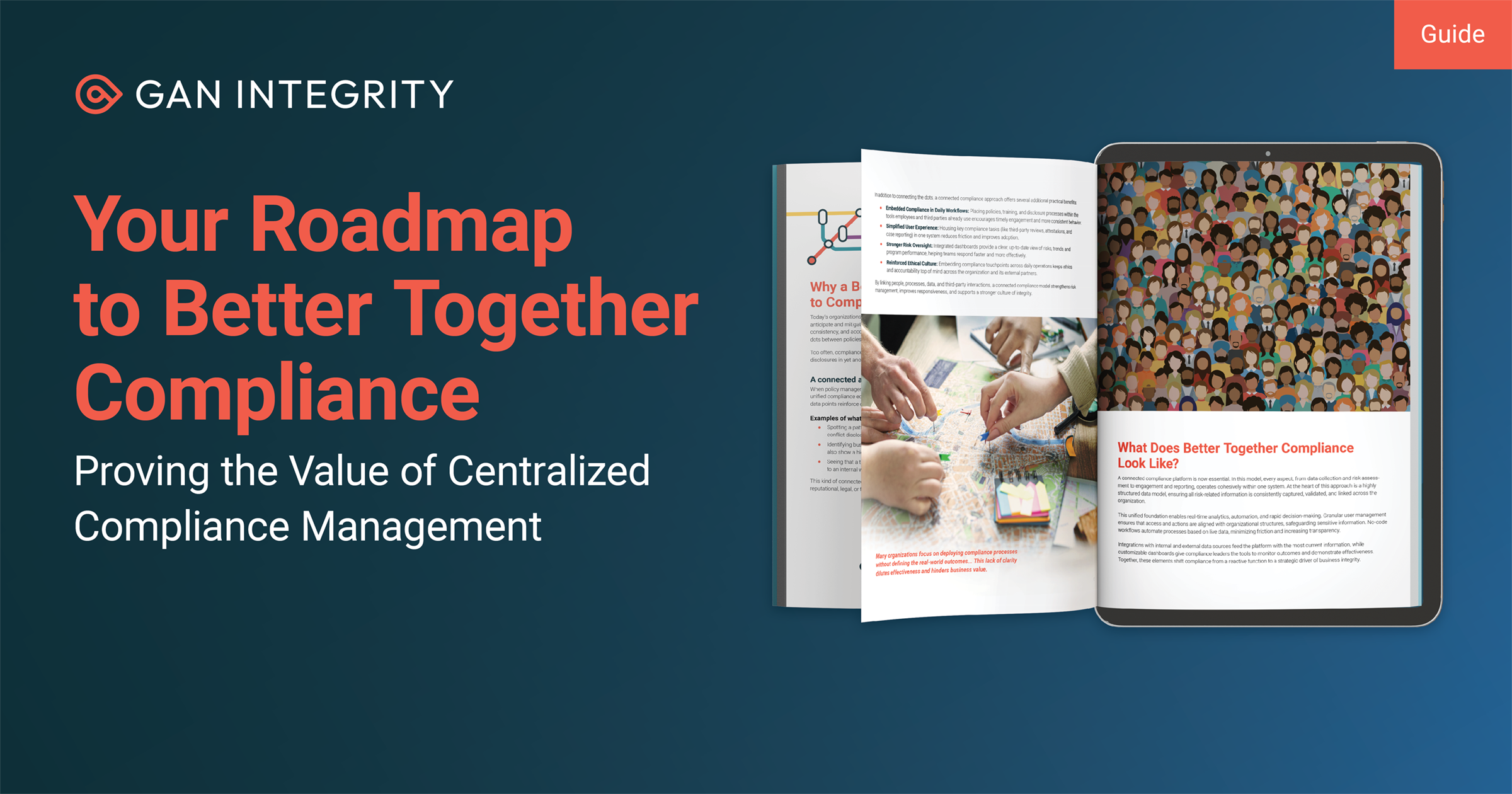With the current momentum for whistleblowing and case management created by not only whistleblower cases in the media but also by the recent push by regulators such as the European Commission, speak-up programs have steadily moved to the center of businesses. Many best practice guides and regulatory requirement breakdowns can help companies who are liable to such whistleblower regulations identify the steps needed to build an adequate and sound whistleblower program.
Yet what’s important to note is that the actual establishment of a hotline, or setting up a best practice process for whistleblower reports is not the end goal in itself. This is, of course, not to undermine the value of safeguards implemented to protect whistleblowers from retaliation and the accessibility to reporting, but rather a reminder that the overarching goal of such programs is strengthening the culture of compliance. So one might ask; once the program has been deployed, how can we know that it’s working toward that higher goal of building an ethical culture?
We have asked that question to a number of industry experts and compliance practitioners and uncovered the metrics that they track to ensure that they’re running a sound case management program. Here is what they thought.
The importance of strong reporting and analytics
Assessing the efficiency of a case management program’s reporting and analytics capabilities should be as important as assessing the robustness of its whistleblower hotline and case management workflow. Because the data that will flow through those reporting channels and the insights uncovered in investigations should not solely live in the confinements of a single case, but be looked at much more holistically, and that you can only do by ensuring that your case management program is underpinned by strong analytics and reporting capabilities.
At GAN, empowering compliance teams with those insights has been a driver at every stage of the development of our Investigations platform. For that reason, powerful analytics and reporting capabilities, also known as GANalytics, are embedded in our solution to support these needs. But to uncover the metrics that are most useful to our audience, we investigated how compliance teams work with their investigations programs, what they track and monitor to build a product that serves just those needs. Here are the main things we found.
Monitor trends in the data
Looking at reporting and investigation data holistically allows teams to uncover trends and patterns that they can’t identify on a case-by-case basis. Leveraging real-time data and encompassing dashboards will enable teams to monitor data over time, see how trends are evolving and occurring, and thereby address any early risk indicators they might spot.
Track performance
Tracking the performance of the case management program from an operational perspective is crucial. Making sure that incident reports coming in are being duly handled and in compliance with regulatory requirements is minimizing company exposure to litigation. With reporting and analytics functionalities, teams are able to maintain a bird’s eye view of performance and at the same time leverage drill-down capabilities to slice and dice the data as needed. At GAN, we constantly appreciate and are mindful of the uniqueness of every business, and therefore understand that the data and insights each team looks for might be different. GANalytics reporting and analytics capabilities are therefore dynamic and flexible to allow for a tailored and customized experience when tracking operations and performance.
Adequate remediation
Closing cases shouldn’t be the final step of a case life cycle. Remediation and root cause should be. Remediation actions are one of the most important steps in the case management process to ensure that misconduct is adequately addressed and not ‘just resolved’. Analyzing remediation data and maintaining an overview of the remediations carried out will also allow the compliance team to not only make adjustments to the compliance program but make adequate recommendations to the business as a whole.
To make up for these needs, GAN’s Investigations’ platform includes integrated remediation and root cause analysis forms in the life cycle of every case allowing users to consistently assess and carry out remedial actions, all the while tracking the latter, in real-time, on their case management dashboard.
Flexibility and agility
Regulatory requirements are constantly evolving, inherently affecting the metrics and key performance indicators (KPIs) that business and compliance teams set out to track. Your analytics and reporting dashboard should therefore also be flexible and dynamic enough to allow for adjustments whenever changes in requirements or business needs occur. This will allow you to always provide meaningful reports to management and be in lockstep with the business strategy. GAN’s platform accounts for just that. In fact, the platform mitigates change management by design, allowing for prompt adjustment of processes and dashboards without having to go back to the drawing board.
Reporting to the board
Reporting on compliance programs and initiatives to the board is probably one of the most straightforward purposes of platform dashboards. Indeed, board and management reporting is made a lot more seamless and easy when compliance teams have intuitive tools at hand. Straightforward and easy-to-use visualizations and data export capabilities increase the efficiency of the reporting experience as well as the time spent collecting and collating the data.
GANalytics dashboards present data charts in an actionable manner making it easy to spot trends and bring forth findings quickly and efficiently, in turn, allowing for more value-based conversations. The ability to centralize the data in one place also ensures that reports are complete and the data is accurate when presenting to senior management.

Effective data governance
To accommodate multiple stakeholders and given the critical nature of case management data, different levels of reporting and KPI tracking are required. We uncovered two levels of data analysis based on two functions; strategic and operational teams. To accommodate the immediate needs of each, GANaytics covers all the data visualizations that satisfy the reporting needs of each of these functions - granted these might sometimes sit with one person wearing the different hats interchangeably.
Quarterly reporting to senior management: dashboards focused on long-term strategies and high-level metrics are tailored to the more strategic needs of senior management. The dashboard endows management with a more strategic overview of performance and statuses. It includes data that allows users to benchmark a range of critical trend-based information and give them insights into the more long-term strategic initiatives and programs.
Operational dashboards to track performance: These dashboards are tailored to the operational needs of case managers and mid-level managers and enable users to create simple and straightforward reports for quick and easy understanding with shorter time frames. They allow case managers to monitor and drill down data related to case details with more astute charts. All the while, aggregate data visualizations enable case managers to produce more senior management hands-on reports on the performance of the program on a more short-term basis.
Centralizing data in one place
The first step to accurate, adequate reporting is centralizing data. It takes a large number of resources and hours to collect and streamline data for reporting purposes, therefore, being able to centralize all case management data in one place eases reporting massively. With GAN’s Investigation platform, everything from reports to investigations, evidence, interview, notes, and communications are captured in one central platform allowing teams to create encompassing reporting dashboards.
The other element to adequate reporting, besides centralization, is real-time visibility. A crucial element to reporting and monitoring is the ability to leverage live data which will, in turn, ensure that users are on top of the latest insights and information. GANalytics not only presents live data visualizations but allows for the structuring of such data into a logical sequence that fits company needs. Data breakdown reflects the company structure which allows compliance teams to take a very structured approach to the inputs they receive.
Metrics to track
- Anonymity - We found that compliance teams carefully track the rate of anonymous incidents reported as an indicator of the level of trust employees have in the organization and their fear of retaliation. Anonymous reports are also - to no one’s surprise - more difficult to follow up on. GAN’s platform has addressed the challenge of anonymous reports by allowing for a fully encrypted and anonymous communication between the whistleblower and investigator.
- Remedial actions - This serves as an important information for companies, particularly those with a high number of cases. This allows companies to adopt a structured and consistent approach to case remediation and ensure that the compliance program is continuously being improved.
- Reports over time - Giving compliance teams insight into potential trends or seasonality of incident reports. For example, it could be that gifts and entertainment rise during holiday seasons and therefore additional controls or training are required.
- Active cases and cases per status - these visualization types provide insight into the number of open cases and enable teams to track performance and progress.
- Average days to close cases - to ensure that cases consistently move through the case management cycle it is critical to monitor the average days it takes to close cases. This will allow you to identify bottlenecks in the process and address them appropriately.
- Cases per substantiation - Uncovering substantiation rates can be indicators of systematic gaps and will allow compliance teams to identify any required actions or a need for better or more compliance controls.
- Number of cases per incident type - Aggregating cases by incident type allows compliance to have insight into the most prevalent types of misconduct in the organization and address these appropriately.
- Case breakdown by location - monitoring the country, location or department associated with cases can be indicative of patterns that compliance can in turn address and mitigate.
When it comes to whistleblowing and investigation programs, compliance teams - and the business as a whole for that matter - can leverage many insights from the inputs and outputs of their case management programs. Based on the insights uncovered, our Investigations solution comes with out-of-the-box dashboards addressing the specific needs of the different roles making it significantly easier to instantly find significant pieces of information. While out-of-the-box visualizations are available for a quick and seamless set up, the platform still makes it possible to create custom dashboards to meet the specific needs of businesses and teams.
Want to learn more about GAN’s closed-loop Investigation solution? Watch a recorded demo of the platform here.

Miriam Konradsen Ayed is the VP of Product Marketing at GAN Integrity. With a track record of building and executing GTM strategies and growing pipeline for SaaS products, she brings products to life through value-driven positioning and messaging.
